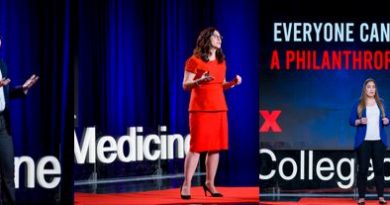Visiting Ecuador: A lesson in translation
Editor’s note: This blog post is the first part of a two-part series.
During one of my summers in college I volunteered as a translator in Houston’s San José Clinic. The clinic serves our city’s uninsured, the majority of whom primarily speak Spanish. Though I did not think much of it at the time, the memory of that experience has shaped much of how I understand cultural and linguistic barriers to care.
The interpreter

As a volunteer several years ago, I tried my best to translate each word that traveled between the care providers and patients. One day, as I searched for the right words to return the physician’s message to the older Hispanic woman before me, I saw her eyes anxiously flit around the examination room and finally focus on mine. Her eyebrows furrowed in concentration as she listened and I felt my heartbeat quicken as I understood the weight of my role.
In such a foreign, occasionally scary, clinical environment, my words were the key to understanding each of the physician’s movements and making sense of what was happening within her own body.
I grew up near the Texas Medical Center, went to school alongside kids whose families had traveled here to receive care, and had a basic awareness of Houston’s cultural diversity. However, this experience was the first time I saw the linguistic barriers that isolate people within my home city.
The outsider
As a traveler a few months ago, I found myself in the position of being that cultural ‘outsider,’ trying to tackle linguistic and cultural barriers in the context of health when I had the opportunity to travel to Ecuador alongside a few others from the Center for Medical Ethics and Health Policy at Baylor College of Medicine. The 10-day trip took us from the capital city of Quito, up into the Andes Mountains, and ultimately on a southeast descent into the Amazon jungle.
Our first day of travel took us to the Quitsato Sundial in Cayambe – the 0’0′ equatorial line where one of the locals showed us a map just like the one I’d grown up with, but rotated 90 degrees. He explained that our conception of the globe that placed so much focus on the regions above the equator was only one way of understanding it. For them, the world was best viewed with the equator as the vertical line of symmetry and ‘y-axis,’ so that more equal visual weight was given to both hemispheres. We tried to assimilate this lesson with our lifelong experience of horizontal equator lines.
We arrived in a lodge run by Kichua-Karanki people and spent the night at high altitude with the Imbabura volcano overlooking us in the distance. The next morning we received an introduction to the culture we’d placed ourselves within from Don Manuel, a village elder and head of the lodge. Everyone gathered around a sundial marked by four quadrants. In each quadrant were different rock and plant arrangements to symbolize each season of the harvest. He pointed to the mountains in the distance, told the tale of the male volcano and its neighboring female peak, and explained the different gender energies running through the rivers, trees, and stones.

I tried to push the 12-month wall calendar out of my mind when he explained ‘the year’ as marked by turns around the sundial and phases of the moon. He spoke with deference as he explained the waxing and waning moon governed when seeds could be planted, when work could be completed, and when community members could undergo healings. Manuel spoke Spanish instead of his native Kichua tongue to ease translation and paused every few lines so our guide could present his lessons in English.
I touched a rock, something I’d been taught to see as ‘inanimate,’ on the ground in front of me and tried my hardest to imagine his understanding of ‘Pachamama,’ or mother Earth, and her spirit that animated all things. The days that followed came with many more learning experiences like this.
-By Erika Versalovic, project coordinator, Center for Medical Ethics and Health Policy at Baylor




Pingback: Visiting Ecuador: A lesson in empathy
Thanks for the article, great work.
Your article is so useful for us,thanks for sharing. Good stuff!
Pingback: A year with PolicyWise
good stuff and great work